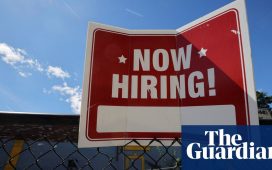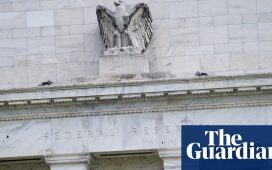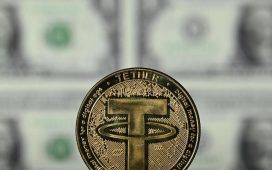Stay informed with free updates
Simply sign up to the US inflation myFT Digest — delivered directly to your inbox.
Federal Reserve chair Jay Powell has said he still expects inflation to fall towards the US central bank’s 2 per cent goal, as new data highlighted the bumpy road ahead for officials as they debate when to begin cutting rates.
US inflation hit 2.5 per cent in February, according to the headline personal consumption expenditures metric that the Fed uses for its target, meeting expectations but rising slightly from 2.4 per cent in the year to January.
Powell said Friday’s Bureau of Economic Analysis report, combined with other recent data, showed that the path towards the 2 per cent target was “sometimes bumpy”.
“Is progress on inflation going to slow for more than two months?” Powell said in San Francisco. “Our position is we don’t know. We’ll tell you what we’ll do if inflation does come down. That’s the base case, that’s what we expect.”
The Fed’s latest projections showed officials still expected to cut rates by 0.75 of a point this year, down from their 23-year high of 5.25-5.5 per cent.
The latest inflation numbers come amid signs of persistent strength in the US economy, despite the Fed’s aggressive push to quell inflation with 525 basis points’ worth of rate increases in 2022 and 2023.
Powell said this US “exceptionalism” in the face of weaker global growth meant the central bank could afford to take its time. “We can and will be careful about this decision [on when to cut rates], because we can be,” he said.
However, the pace of those cuts could yet be scuppered by a new bout of inflation. Petrol costs have risen quickly again in recent months, another reminder of price pressures that will also complicate the Biden administration’s efforts to tout its economic record ahead of the November presidential vote.
Andrew Hollenhorst, an economist at Citi, noted that shipping disruptions in the Panama and Suez canals, and now on the US east coast following the collapse of a bridge at Baltimore’s port, meant goods prices were also “increasingly subject to upside risk”.
Some economists have suggested that rates may not need to fall at all.
“We see potentially this year a scenario where you have inflation remaining above target in the range of 2.5 to 3 per cent and you also have an above-trend growth rate — over 2 per cent growth. I don’t think the Fed can claim ‘mission accomplished’ in that case,” said Qian Wang, a global economist at investor Vanguard. “At this point the Fed will be data dependent — and the markets too.”
The data release offered a mixed outlook for inflation in the world’s largest economy. February’s core measure, the Fed’s preferred gauge of underlying inflation, fell to 2.8 per cent from 2.9 per cent a month earlier. But the dip reflected an upwards revision for January, when prices rose more quickly than previously thought.
The dollar index, which typically moves in line with interest rate expectations, dipped in the minutes after the publication of the new inflation readings. US stock markets were closed on Good Friday. Stocks have rallied strongly this year, with the blue-chip S&P 500 enjoying its best start to a year since 2019, having risen 10.2 per cent in the first quarter of 2024.
Additional reporting by Harriet Clarfelt in New York









